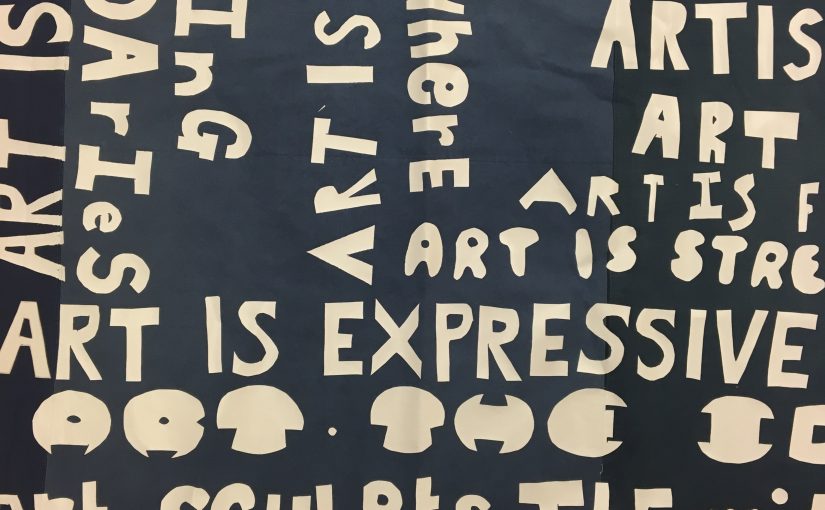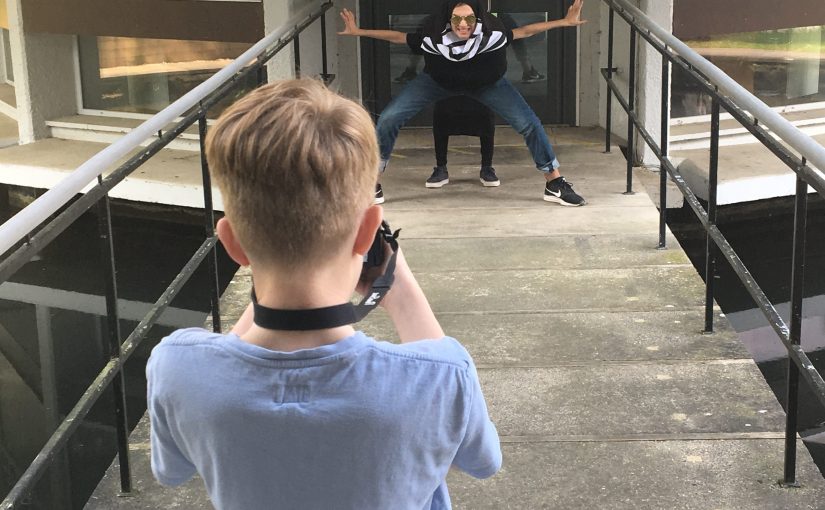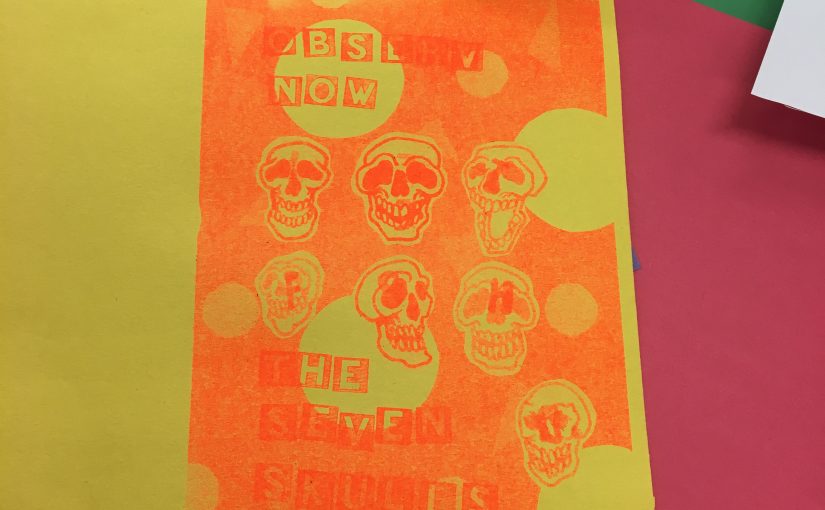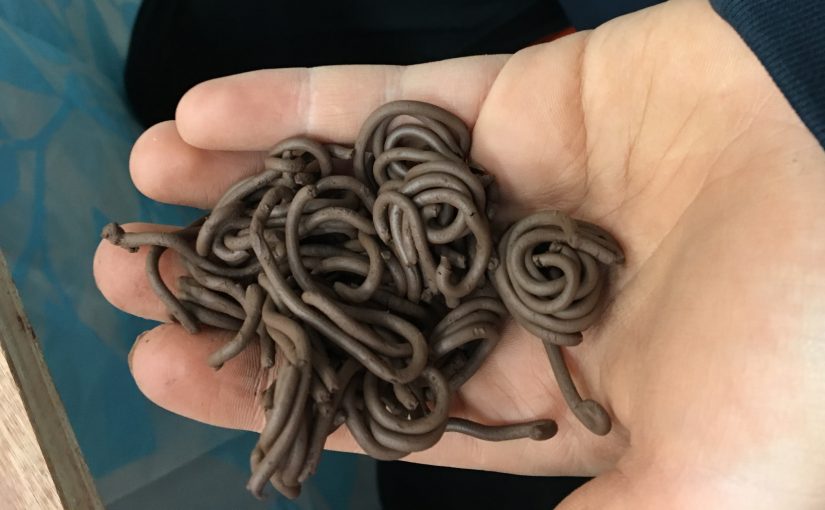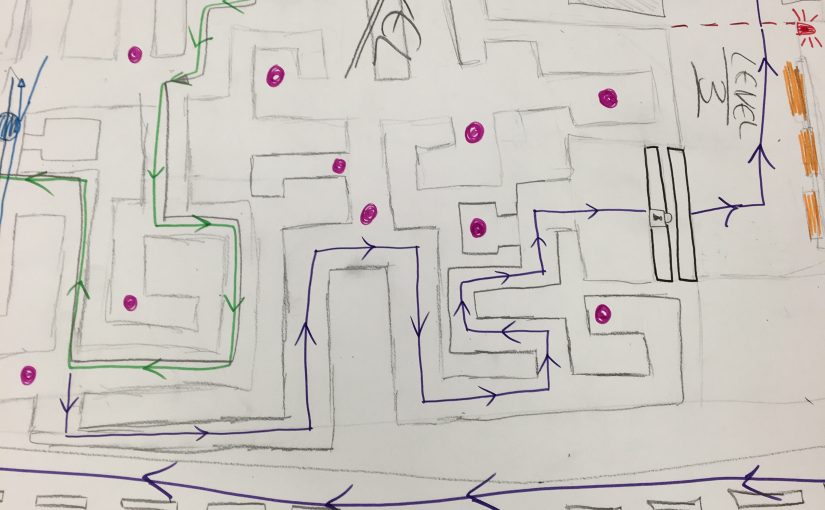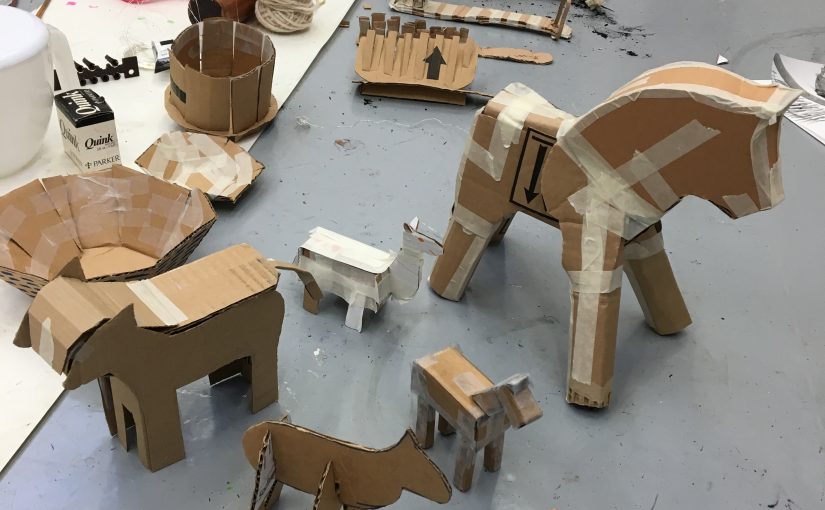This week we were in production mode; developing our slogans about what we believe art is into a giant collaborative banner.
Using a limited colour palette of white text on a dark blue canvas * to unify the individual slogans we arranged everyone’s contribution. The whole process was very democratic with each decision about aesthetics and design being held to a vote.
The hand cut vinyl letters were bonded on to the canvas and create a really sharp professional look almost similar to screen printing.
To sit along side our banner we each made a t shirt with the slogan ‘artist’ to be worn to the private view. The t shirts also allowed us to try out a third method of getting text or images on to a textile background. We created stencils using ‘freezer paper’ and sponges to apply fabric paints; this simple technique created really striking results. Of course some of the artists rebelled with ideas of their own about their t shirt designs; which seemed totally fitting after all our discussion around art allowing you to find your own voice!
The manifesto will get be sent straight away to London for the exhibition; we cannot wait to see it at Somerset House as part of the National Saturday Club Summer Show!
*Made from dyed and patched reclaimed fabrics, inspired by our session with Linda Mackie which focused on textile waste.
Some of the club members had plans to use this printing technique on other projects so for their reference here are the materials we used:
Fabric paints https://www.bakerross.co.uk/search/go?w=fabric%20paints
Sponges https://www.bakerross.co.uk/search/go?w=paint%20sponges
Freezer paper sheets https://www.amazon.co.uk/Silkcraft-Freezer-Paper-Sheets-A4/dp/B00DS4Q2C0
These are not sponsored links.

